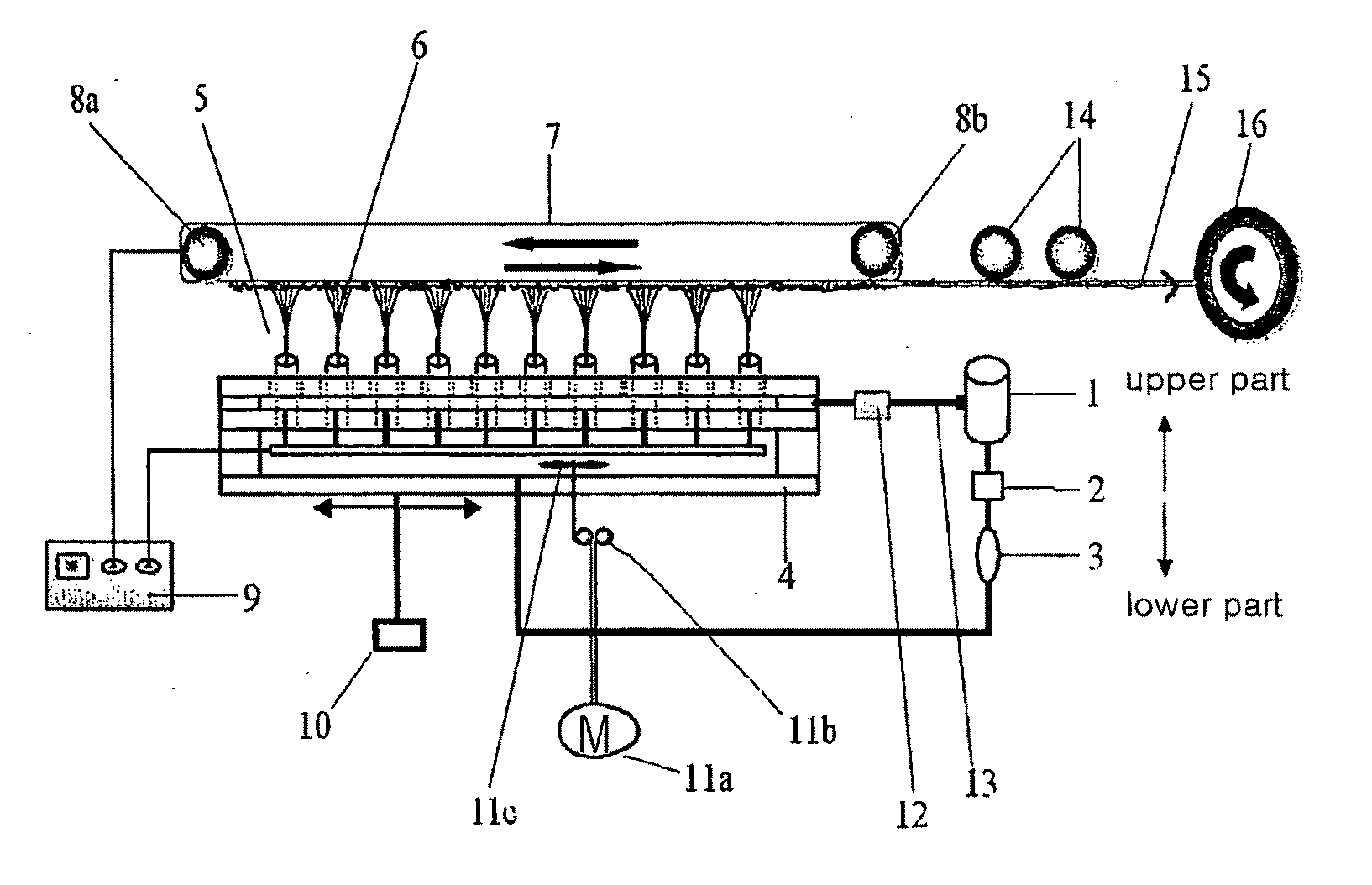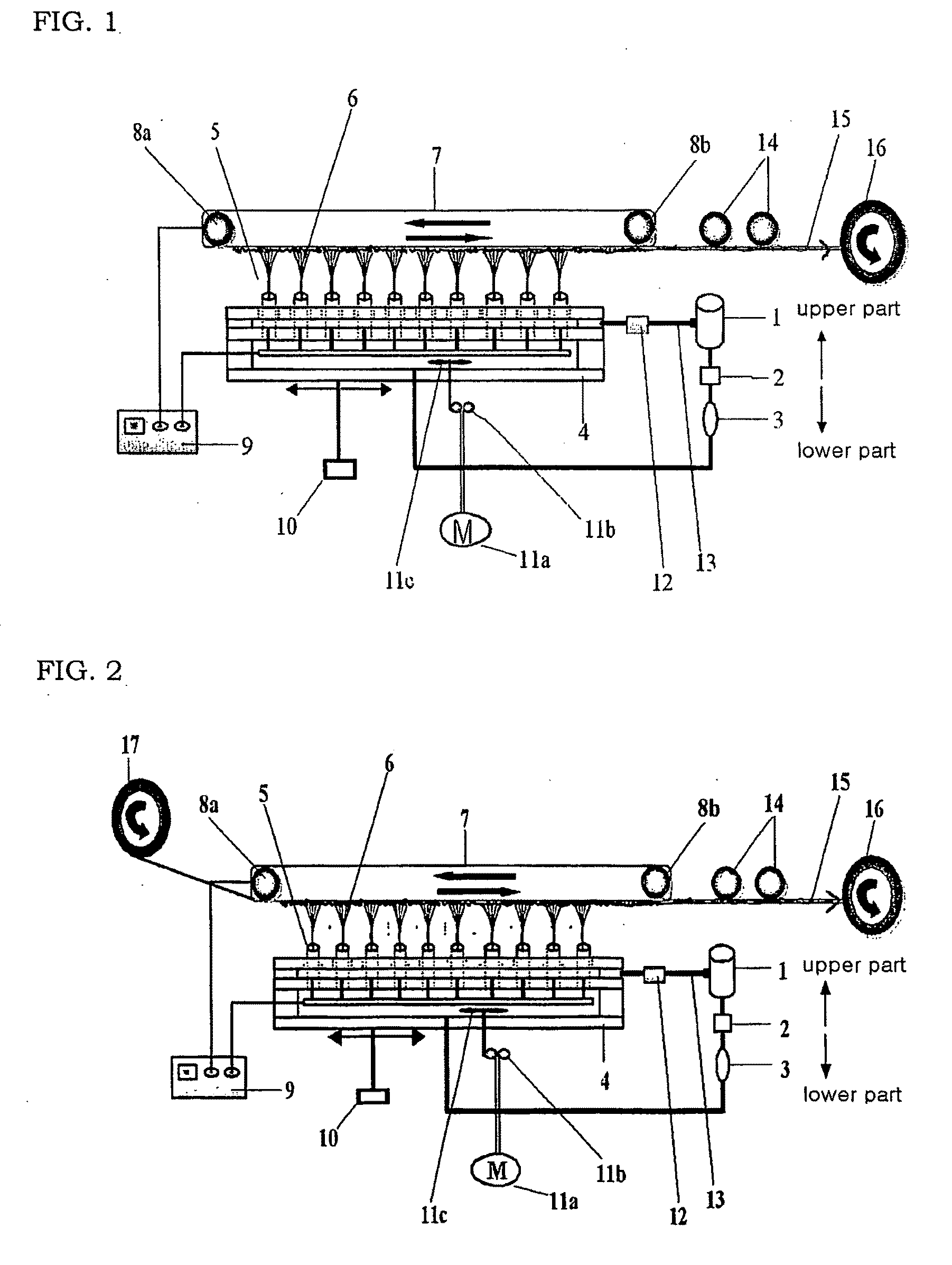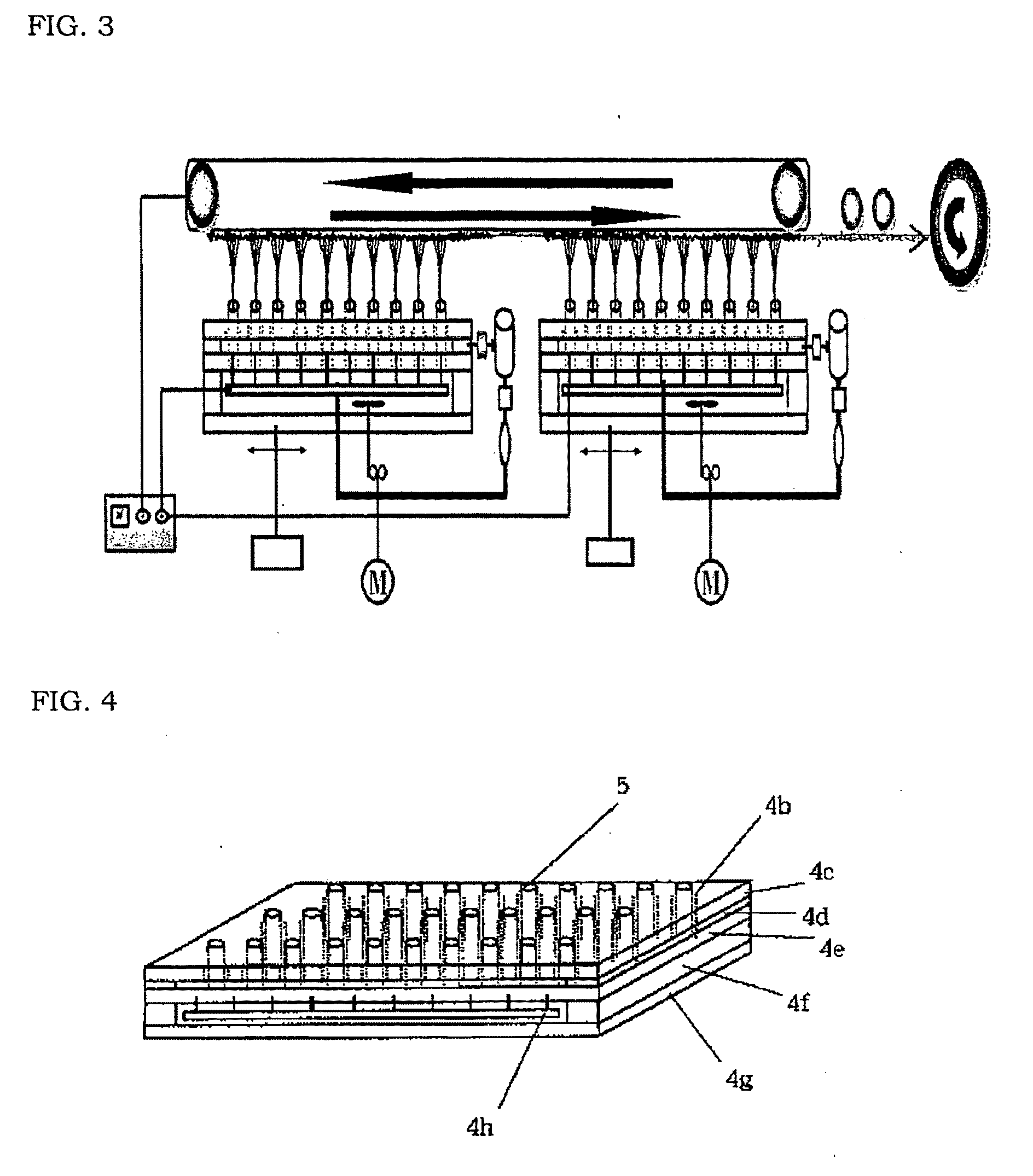Bottom-up electrospinning devices, and nanofibers prepared by using the same
- Summary
- Abstract
- Description
- Claims
- Application Information
AI Technical Summary
Benefits of technology
Problems solved by technology
Method used
Image
Examples
example 1
[0101]Chips of nylon 6 having a relative viscosity of 3.2 (determined in a 96% sulfuric acid solution) were dissolved in formic acid to prepare a 25% spinning liquid. The spinning liquid had a viscosity of 1200 centipoises (cPs) measured by using Rheometer-DV, III, Brookfield Co., USA, an electric conductivity of 350 mS / m measured by a conductivity meter, CM-40G, TOA electronics Co., Japan, and a surface tension of 58 mN / m measured by a tension meter (K10St, Kruss Co., Germany).
[0102]The spinning liquid was stored in a spinning liquid main tank 1, quantitatively metered by a metering pump 2, and then fed to a spinning liquid dropping device 3 to discontinuously change the flow of the spinning liquid. Continually, the spinning liquid was fed to a nozzle block 4 of a bottom-up electrospinning devices as shown in FIG. 1 with a 35 kV voltage applied thereto, spun bottom-up onto fibers through nozzles and collected on a collector 7 located on the top part to produce a nonwoven fabric web...
example 2
[0103]Chips of nylon 6 having a relative viscosity of 3.2 (determined in a 96% sulfuric acid solution) were dissolved in formic acid to prepare a 20% spinning liquid. The spinning liquid had a viscosity of 1050 centipoises (cPs) measured by using Rheometer-DV, III, Brookfield Co., USA, an electric conductivity of 350 mS / m measured by a conductivity meter, CM-40G, TOA electronics Co., Japan, and a surface tension of 51 mN / m measured by a tension meter (K10St, Kruss Co., Germany).
[0104]The spinning liquid was stored in a main tank 1, quantitatively metered by a metering pump 2, and then fed to a spinning liquid dropping device 3 to discontinuously change the flow of the spinning liquid. Continually, the spinning liquid was fed to a nozzle block 4 of a bottom-up electrospinning devices as shown in FIG. 1 with a 35 kV voltage applied thereto, spun bottom-up onto fibers through nozzles and electrospun on a collector 7 located on the top part. Meanwhile, a polypropylene nonwoven fabric ha...
example 3
[0105]A niobium oxide (NbO2 of 50 weight parts in a solution state) sol solution was prepared from niobium ethoxide by a general sol-gel process. That is, 1,000 g of niobium was dissolved in 1000 g of ethanol and 3 g of acetic acid was added thereto. Then, the mixture was stirred at 40° C. with approximately 100 rpm. After two hours, a sol solution in dim yellow was obtained. Acetic acid functions to prevent precipitation in the preparation of sol and acts as a catalyst for hydrolysis and condensation. 2,500 g of a solution made by dissolving in acetone 14 weight parts of polyvinyl acetate was mixed with 2,000 g of a niobium oxide sol solution. The mixed solution was stirred for 5 hours at 35° C. with 60 rpm. By using this solution, electrospinning was carried out by a bottom-up electrospinning devices. The spinning liquid was stored in a main tank 1, quantitatively metered by a metering pump 2, and then fed to a spinning liquid dropping device 3 to discontinuously change the flow o...
PUM
| Property | Measurement | Unit |
|---|---|---|
| Time | aaaaa | aaaaa |
| Angle | aaaaa | aaaaa |
| Mass | aaaaa | aaaaa |
Abstract
Description
Claims
Application Information
 Login to View More
Login to View More - R&D
- Intellectual Property
- Life Sciences
- Materials
- Tech Scout
- Unparalleled Data Quality
- Higher Quality Content
- 60% Fewer Hallucinations
Browse by: Latest US Patents, China's latest patents, Technical Efficacy Thesaurus, Application Domain, Technology Topic, Popular Technical Reports.
© 2025 PatSnap. All rights reserved.Legal|Privacy policy|Modern Slavery Act Transparency Statement|Sitemap|About US| Contact US: help@patsnap.com



